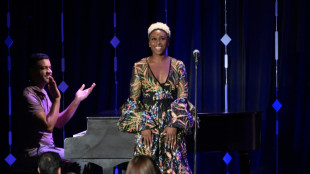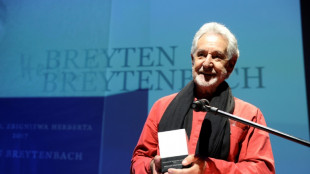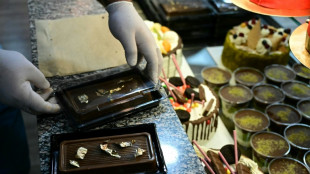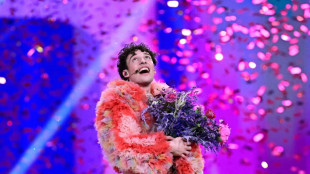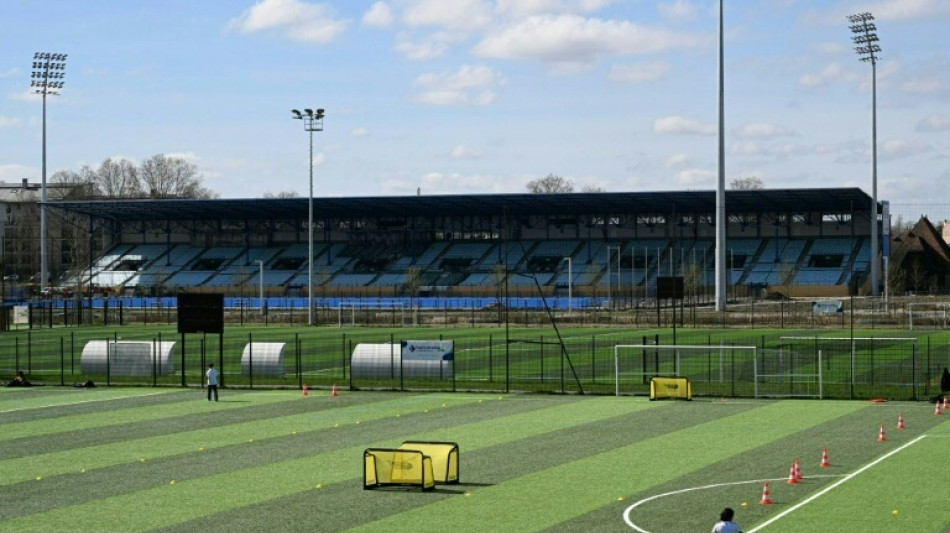

A century on, Paris cherishes a few golden Olympic venues
After a gap of 100 years, the Olympics return to Paris, but, with two exceptions, not to the arenas used in 1924 -- even though several still exist, usually disguised by the names of later French sports heroes.
- From athletics to hockey -
A century ago, just as this summer, the main Olympic stadium was in the suburbs to the north of the city. Then, Colombes hosted a string of sports and was also the site of the Olympic village. The remodelled stadium will now host the hockey.
The site was a horse racetrack from 1883. By 1924, one of the elite private Paris sports clubs, Racing Club de France, had leased the land. They offered to "build a 60,000-seat Olympic stadium on the site and be reimbursed afterwards from the proceeds of the Olympics", said historian Michael Delepine, who has written a book about the stadium.
All that remains of that stadium, the scene of the epic duel between British sprinters Harold Abrahams and Eric Liddell -- immortalised in the film "Chariots of Fire" -- and the long jump victory of DeHart Hubbard, the first black American athlete to win an Olympic medal, is the 6,000-seat grandstand.
The stadium, later renamed after Racing rugby player Yves du Manoir, who died in 1928 at the controls of his plane, hosted a World Cup final, became the home of the French cup final and the national football and rugby teams. Brazil legend Pele scored a hat-trick there against France in 1963. It was supplanted by the new Parc des Princes, nearer the centre of Paris, in 1972, although the unrenovated stadium remained home to the Racing and Racing 92 rugby teams until 2017.
The stadium, which had a record attendance of 63,638 for a 1969 European Cup quarter-final replay between Ajax and Benfica, will hold 15,000 for the Olympic hockey.
- Tarzan's swimming pool -
On the other side of Paris in the Piscine des Tourelle, at the Porte des Lilas, Johnny Weissmuller, later the lead in a dozen Tarzan movies, won three swimming golds and a water polo bronze in 1924.
The pool, still adorned with Olympic rings on the facade, has since been renamed for swimmer Georges Vallerey, who medalled for France in the 1948 Games. The pool was for a long time the headquarters of the French Swimming Federation and hosted numerous national and international competitions.
Now a municipal pool, with a retractable roof and small stands down either side, it is being refurbished to act as a training pool for swimming and triathlon this summer.
- The historic cycling track -
The track cycling in 1924, as in the second-ever Olympics in 1900, was held at the Velodrome de Vincennes in the park in the southeast corner of Paris. The track opened in 1898, with steel-beamed grandstands designed by Gustave Eiffel. It was also known as the Velodrome de la Cipale and later renamed for French cyclist, Jacques Anquetil, who won the Tour de France five times between 1957 and 1964. The venue served as the finish line for the Tour from 1968 to 1974. On its 500m concrete track, Eddy Merckx won the final stage four times and sealed five overall victories.
It is now municipally owned, has a rugby pitch in the centre and remains a temple of amateur cyclists. Every Saturday morning from March to October, it hosts events organised by a Paris club.
"We have a setting with a long history," says Jean Delahousse, president of the Velo-Club des Veterans Parisiens.
- Gone or repurposed -
The Games are returning to one other venue from the last century: the grounds of the Chateau de Versailles.
The immense park was used for shooting in 1924, but will host equestrianism and modern pentathlon in 2024.
The infamous Velodrome d'Hiver, in the suburb of Pantin, home of boxing, fencing, weightlifting and wrestling in 1924, was used to hold 13,000 Jews rounded up by French police in July 1942 before they were transported to concentration camps. It remained in use as a sports venue after the war but caught fire in 1959 and was demolished and replaced with a block of flats.
One football venue, the Bergeyre stadium, on a scenic hill in the northeast of the city has also been destroyed.
Another 1924 football venue, the Stade Pershing, in the Bois de Vincennes, became part of a municipal amateur sports complex in the 1960s, including, appropriately for a venue named after an American general, a baseball diamond, though that sport has been dropped for these Games.
Basque pelota was included as a demonstration sport in 1924 and a rebuilt court remains on the same site in the smart 16th arrondissement.
J.M.Gillet--JdB
